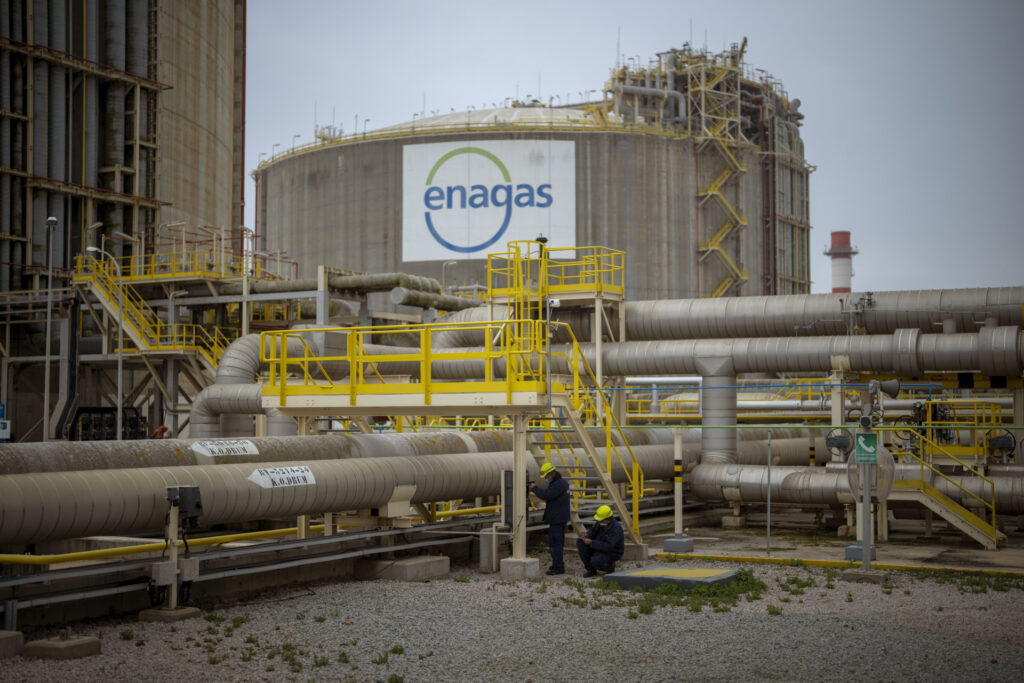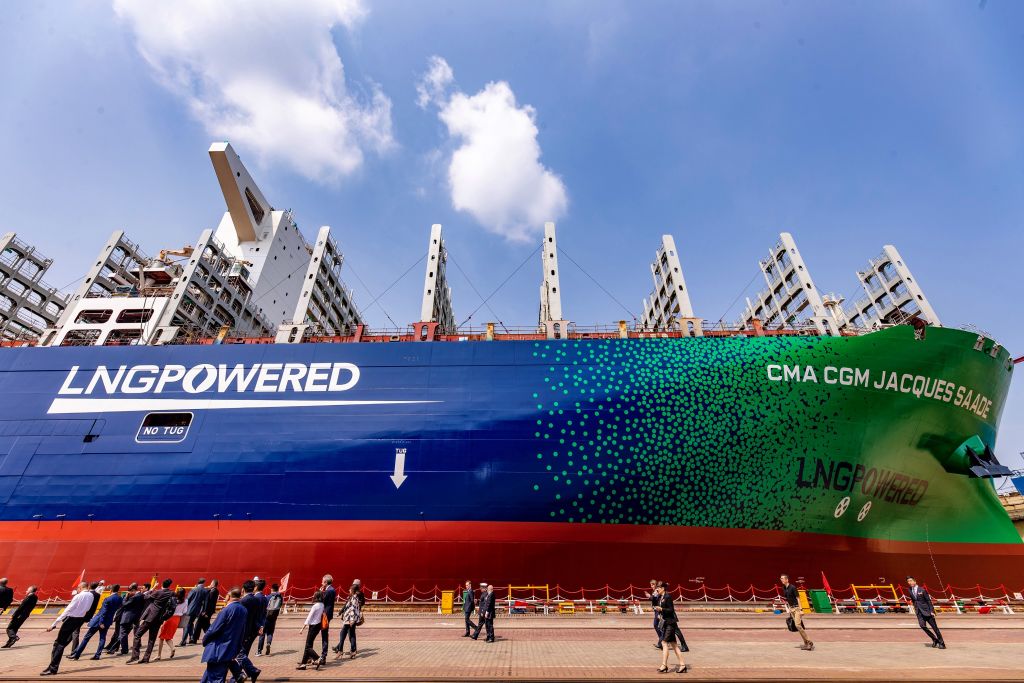China’s state-run Global Times on Sunday said Chinese shipbuilders are “working around the clock” to build ships that can transport liquified natural gas (LNG) to Europe, which is desperate to acquire more of the fuel after losing its supply from Russia.
“Because of the damaged Nord Stream pipeline and the ongoing Russia-Ukraine conflict, gas supplies in Europe are tight. In response, orders for LNG vessels saw double-digit growth lately, with some major Chinese shipbuilders reporting order backlogs that stretch through 2026,” the Global Times reported.
Various entities owned by the China State Shipbuilding Company (CSSC) are cranking out dozens of huge LNG carriers as quickly as they can, including a 30,000-cubic meter carrier recently delivered to Dutch shipping magnate Anthony Veder that ranks as one of the largest ships in its class worldwide.
A CSCC representative told the Global Times the company has 139 outstanding orders for LNG ships, which generally take around two years to build. A Chinese shipbuilding industry association said 23.94 million tons of construction have been completed so far in 2022, making up 45.4 percent of the global market.
Reuters reported on Monday that a good deal of that new LNG carrier tonnage is presently floating off the coast of Spain, unable to secure docking slots because Europe lacks the “regasification” capacity to convert such a huge amount of superchilled seaborne LNG back to its end-user condition. The continent also has a shortage of pipelines that might be able to carry LNG cargoes from coastal regions to regasification facilities further inland.
Reuters’ sources counted over 35 LNG carriers standing by for docking off the coast of Spain, which has only six berths available at its degasification terminals. Spain’s Enagas corporation said on Monday the congestion is unlikely to clear up before the first week of November, so some of the LNG shipments may need to be rejected.

Operators work at the Enagss regasification plant, the largest LNG plant in Europe, in Barcelona, Spain, Tuesday, March 29, 2022. (AP Photo/Emilio Morenatti)
“There are also LNG vessels at anchor near other European countries which could mean dozens more are waiting,” an industry source told Reuters.
In addition to the shortage of processing capacity, Europe’s demand for LNG has dropped because the economy is slowing down, and some ship owners might be waiting for winter cold weather to settle in, so they can sell their cargo at higher prices.

The world’s first LNG-powered 23,000-TEU container ship is seen docked during its launch at a shipyard in Shanghai on September 25, 2019. (STR/AFP via Getty Images)
Ironically given the Global Times’ boasting about China’s surge in LNG carrier production, another factor that might drive prices up is China’s sudden reluctance to sell so much of its own liquified natural gas.
The Chinese government ordered state-owned gas importers to halt shipments of gas to foreign buyers on Monday, after months of selling surplus inventories that were created when China’s coronavirus lockdowns dramatically reduced domestic demand. The Chinese are reportedly concerned about ensuring their own consumer supplies of gas during the coming winter.
Forbes on Tuesday chided the Europeans for setting up their own gas crisis and failing to adequately plan for the loss of the Russian gas pipelines they made themselves so dependent upon:
Of all the myriad reasons why Europe’s plan to rely on imports of LNG to displace its’ self-imposed reliance on natural gas coming in from Putin’s Russia is an unsustainable thought process, lack of adequate regasification facilities to handle the needed load is perhaps the most compelling. Beyond the regasification ports that do exist, the continent also increasingly finds itself lacking the extensive pipeline network needed to most efficiently and safely move the natural gas to market and industrial demand centers.
Germany has perhaps been the worst offender in this lack of foresight, so confident have its ministers been in their unending ability to serve their country’s natural gas needs with cheap imports from Vladimir Putin’s Russia. That particular conceit, of course, was shattered in February, when Putin launched his reprehensible invasion of Ukraine.
By that time, European officials were already in the midst of a scramble to secure supplies of LNG imports to supplement imports from Russia due to a failure of the wind industry in Germany and other countries. Putin’s war only served to turn that scramble into a panic.
Even if Europe possessed the regasification capacity needed to replace Russian pipeline deliveries with seaborne imports, Europe’s insane “green energy” policies could end up monopolizing the LNG shipping industry and leaving the Third World in the dark.
“We have all seen stories of populations in developing nations like Pakistan and Bangladesh suffering through long, daily power blackouts because they are unable to purchase sufficient LNG as a result of Europe’s voracious needs. This situation is not fair, just or sustainable,” Forbes warned.

COMMENTS
Please let us know if you're having issues with commenting.